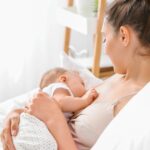
When it comes to hail damage, car owners often find themselves faced with the daunting task of repairing their vehicles. Hailstorms can leave a trail of dents and dings, not to mention shattered windshields and broken mirrors. The cost of repairing hail damage can vary depending on several factors, including the severity of the damage, the make and model of the car, and the chosen repair method.
Hail Damage Car Repair Cost
As an expert in car repairs, I’ll provide you with some valuable insights into understanding hail damage on cars. Dealing with hail damage can be a frustrating experience for car owners, but it’s essential to comprehend the extent of the damage and its associated costs. Let’s dig deeper into this topic.
- What is Hail Damage? Hail damage occurs when a vehicle is subjected to intense hailstorms, resulting in dents, scratches, cracked windshields, and damaged paintwork. These damages not only affect the aesthetic appeal of your car but also its overall value.
- Assessing the Severity: The severity of hail damage varies depending on factors such as the size of hailstones and their impact velocity. Larger hailstones can cause more significant dents and structural damage than smaller ones.
- Repair Options: When it comes to repairing hail-damaged cars, there are a few options available:
- Paintless Dent Repair (PDR): PDR is often used for minor dents caused by hailstones. Skilled technicians use specialized tools to carefully massage out the dents without compromising the original paint finish.
- Conventional Repairs: For more severe cases where PDR isn’t feasible, conventional repair methods involving body filler, sanding, repainting, and replacing damaged parts may be necessary.
- Insurance Coverage: It’s crucial to check if your insurance policy covers hail damage repairs. Depending on your coverage and deductible amount, you may have financial assistance for repairing or replacing damaged components.
- Factors Influencing Repair Costs: Several factors contribute to determining the cost of repairing hail damage:
- Size and Number of Dents: The number and size of dents significantly impact repair costs.
- Paint Damage: If your vehicle’s paint has been chipped or scratched due to hailstones, additional repainting may be required, adding to the overall cost.
- Vehicle Type: The make and model of your car can influence repair costs. Luxury or rare vehicles often require specialized repairs, which can be more expensive.
- Location: Repair costs can vary depending on your location and local labor rates.

Preventing Future Hail Damage To Your Car
As an expert in car repairs, I understand the frustration and financial burden that hail damage can cause. Fortunately, there are steps you can take to minimize the risk of future damage and protect your vehicle. Here are some practical tips to help prevent hail damage:
- Garage or Covered Parking: Whenever possible, park your car in a garage or under a covered parking area. This provides the best protection against hailstorms.
- Car Covers: Investing in a quality car cover can provide an extra layer of defense for your vehicle during hailstorms. Look for covers specifically designed to withstand impact and ensure they fit securely.
- Hail Protection Mats: Another option is using specially designed hail protection mats that act as a shield against falling hailstones. These mats are easy to install and provide added peace of mind.
- Stay Informed: Keep an eye on weather forecasts and be aware of any potential severe weather conditions, including hailstorms. If a storm is approaching, try to find shelter for your vehicle beforehand.
- Park Strategically: If no covered parking is available, try to park strategically under large trees or buildings that can offer some level of protection from falling hailstones.
Remember, while these preventive measures can significantly reduce the risk of future hail damage, they may not guarantee complete protection in extreme circumstances. It’s always important to prioritize your safety when dealing with severe weather conditions.







































